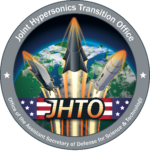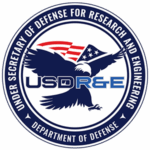
Dr. Chris Combs, an expert in high-speed aerodynamics, is leading a team from The University of Texas at San Antonio researching hypersonic separation events using modeling and experimental measurements. Partnered with Lockheed Martin, the research team was awarded $1.5 million in 2020 by the Department of Defense through the University Consortium for Applied Hypersonics (UCAH) which is administered by the Texas A&M Engineering Experiment Station.
This project is designed to study the separation of materials moving at hypersonic speeds, a common challenge in hypersonic flight. Currently, it is difficult to model these separations using computational models alone. This research explores the common aerodynamic issue by using controlled hypersonic experiments and computational data to further examine stage separation, booster drop-off and fairing separation. The team will combine the experimental data and feed it into computations to improve models, while insight from computations will guide targeted experiments.
“(Although) these events are complex and difficult to model, we look forward to working together as a team to produce relevant test data and impactful computational modeling results that can be transitioned to key stakeholders,” said Combs. “We are extremely excited to be leading this UCAH project to study hypersonic separation events, and as a minority-serving institution, we are uniquely positioned to assist in critical workforce development and provide research experiences in our hypersonic wind tunnel to a highly diverse student body.”
The research team’s biggest challenges are taking measurements in a hypersonic test environment and running simulations of complex, high-speed aerodynamic phenomena. The entire process presents challenges and requires consistent improvement of the models. The partnership with Lockheed Martin lends valuable subject-matter expertise related to the applied features of the project and is helping to maximize the study’s impact.
In addition to Lockheed Martin as an industry partner, the University of Texas at San Antonio-led research team is also partnering with the University of Texas at Austin, University of Tennessee at Knoxville, Southwest Research Institute and Oak Ridge National Laboratory. With Combs’ leadership, this unique approach will focus on producing results that other researchers can utilize to create new hypersonics systems within the commercial, space and defense industries, all of which benefit from addressing material separation.


